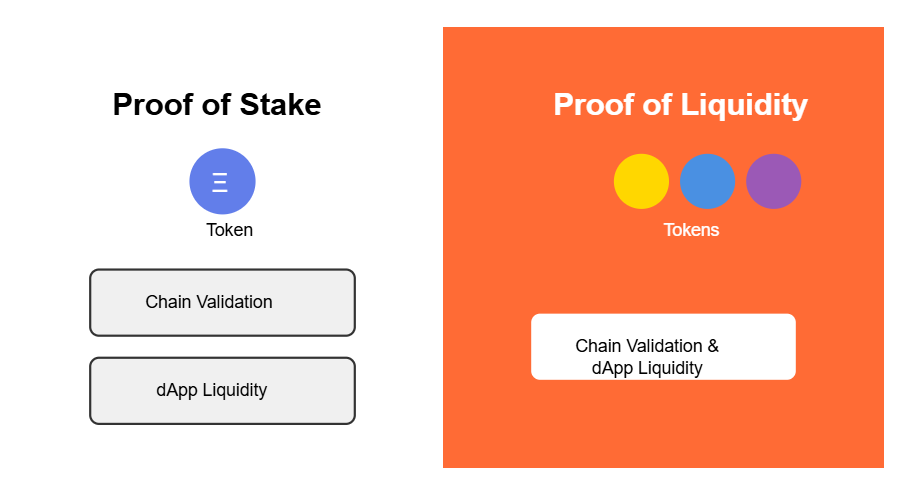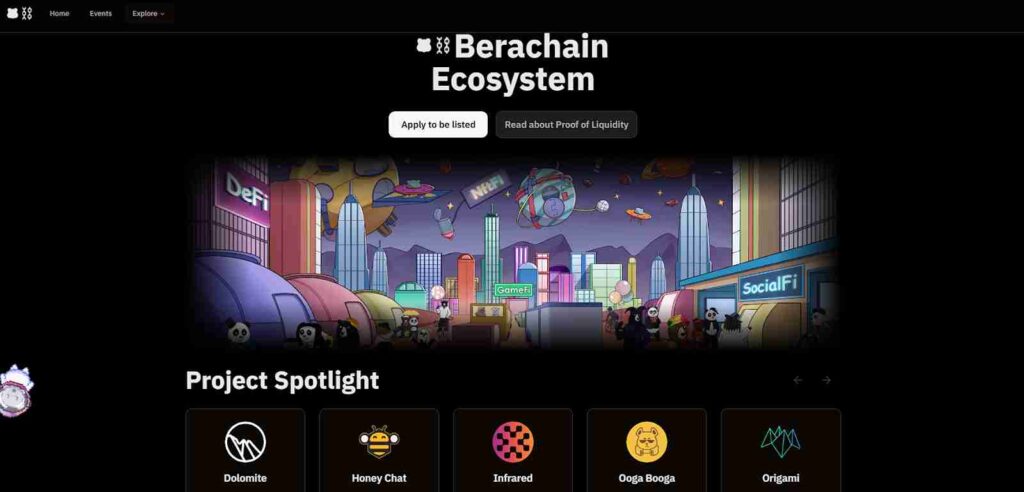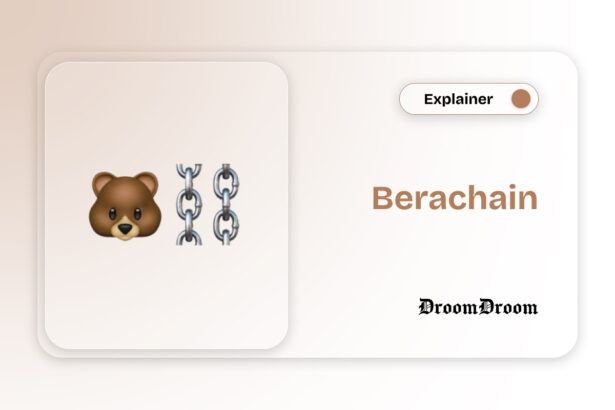Berachain is the most hyped project in the crypto space. It is trending across all social media platforms, from X to YouTube. While hundreds of projects are launched in the cryptocurrency market each month, Berachain stands out due to its diverse usability and innovative mechanisms.
Berachain is a layer-1 blockchain project that operates on a proof-of-liquidity (PoL) model. This model allows validators to stake liquidity instead of locking tokens. Moreover, this model assures that your funds are moving within the network instead of staying still as it happens in proof-of-stake (PoS) models.
So, if you are excited to know about this new project, then you are at the right place. In this article, we will explore Berachain, its working, tokenomics, and other details. So without wasting more time, let’s get started.
What is Berachain?
Berachain is an EVM-identical Layer 1 blockchain that uses a proof of liquidity mechanism. It is built utilizing the Cosmos SDK. EVM stands for Ethereum Virtual Machine, which means the Berachain can upgrade according to the new version of EVM.
Berachain is the same version as Ethereum’s main software (EVM). It uses the same tools, such as Geth, Reth, Erigon, and Nethermind, to operate smart contracts. This makes Berachain up to date with the latest advancements of the EVM. This compatibility is a key reason why Berachain is considered a competitor to both Solana and Ethereum.
Know about some best practices to protect yourself from DeFi scams and hacks.
How Does Berachain Work?
Berachain works on the proof-of-liquidity (PoL) model, which also keeps the network secure. By utilizing the PoL mechanism, user funds remain active on the blockchain instead of just locking the tokens. In simple terms, the user’s money can be used by the network and remains active.

PoS Vs PoL
In this system, Validators (people who help run the network) utilize the BEAR tokens and direct BGY emissions to liquidity providers in Reward Vaults. This cycle runs the network smoothly.
Key Benefits Berachain’s Proof Of Liquidity (PoL) Mechanism
- Users who deposit tokens into liquidity pools receive LP tokens as a reward.
- Liquidity providers receive BGT (Berachain Governance Token) as an incentive when they stake LP tokens in vaults.
- BGT tokens can be burned to generate BERA tokens.
- Validators require BGT tokens to manage the distribution of rewards, and for this, they must persuade users to acquire their BGT tokens.
Besides this, the blockchain is perfectly compatible with Ethereum. Because of these features, users can utilize ETH tools such as smart contracts and decentralized applications (dApps) without making any changes. Moreover, Berachain utilizes BeaconKit, which is integrated with CometBFT. This system helps Bearchain to single-slot finality, leading to fast transactions.
Understanding Bearachain Tokenomics
Bearchain works on a three-token system. Each token has a specific role and utility. The tri-token has a critical role in a system such as security, governance, and stable transactions. Moreover, these tokens are interconnected to each other.
$BERA (Native token)
BERA is utilized to pay the gas fees for all network transactions. In addition, it is used as a trading asset for the Berachain DeFi protocols and as a reward token for the blockchain validators. Moreover, the BERA token is now available on major exchanges such as OKX, Binance, and Coinbase.
$BGT (Bera Governance Token)
In addition, it is used as a trading asset for the Berachain DeFi protocols and as a reward token for the blockchain validators. Besides this, the token can be burned in a 1:1 ratio to the BERA token. However, the BERA token is non convertible into BGT.
$HONEY (Stablecoin)
The Honey token is a stablecoin for the network, developed to be stable and reliable for transactions within the network and beyond. It is backed by collateral and pegged to the United States Dollar. It is also used for payments, remittances, and as a hedge against volatility.
All three tokens maintain balance in the Berachain ecosystem, providing liquidity, security, and governance to the blockchain. However, the tokenomics are designed around the $BERA token, which has a fixed supply of 500 million. BERA’s role is crucial in the ecosystem, as it is used for various purposes, such as staking, transactions, and rewards.
The distribution will be as follows: Core contributors will receive 16.8%, which is approximately 84 million BERA tokens. Investors will obtain 34.3%, amounting to 171.5 million tokens. The Community and Airdrop category will receive 15.8%, totaling 79 million BERA tokens.
Additionally, future Community Incentives are allocated 13.1% or 65.5 million BERA tokens. Finally, the Ecosystem and R&D team will receive 20%, equivalent to 100 million BERA tokens.
Berachain Ecosystem
Berachain supports over 80 projects across various sectors such as DeFi, Gaming, SocialFi, NFT, and more.

GameFi
BeraTone: BeraTone is an online multiplayer game where users can do farming, fishing, crafting, and more. It is a life sim video game based on the Berachain blockchain.
Bera Hoses: Bera Hoses is a horse racing role-playing game built on Berachain. In-game users can earn reward tokens and indulge in several activities.
DeFi
Beraborrow: Beraborrow provides users with fast access to funds through Beracha assets via a stablecoin Nectar ($NECT). Moreover, this token is powered by a Proof-of-Liquidity (PoL) mechanism.
Dolomite: It is a leading protocol and supports a variety of assets. This platform allows users to borrow against their assets while using them for stake, vest, vote, earn, and rewards at the same time.
SocialFi
Honey Chat: Honey Chat is a Social Networking and Finance (SocialFi) with decentralized features. It is platforms that act as a bridge for crypto fans, creators and influencers.
Mainnet Launch Event
On February 6, 2025, Berachain introduced its mainnet and Token Generation Event (TGE). Just after the launch, it created so much buzz and also saw over 2 million transactions. After the launch, the BERA token faced volatility as it hit an all-time high of $14.83 just after the launch and then corrected to $6.10.
At the time of writing BERA token is trading at the price of 44.78 with an intraday drawdown of 21.81%. The market cap stands at $514.11 million and the 24-hour trading volume was $459.29 million. Moreover, the total supply of the token is 500 million BERA and the circulation supply is 107.48 million BERA.
Could Berachain Outshine Solana And Ethereum?
Experts believe that Berachain could grow into a stronger competitor to Solana and Ethereum. The blockchain has branded itself as a high-performance layer-1 project that converts liquidity into security by utilizing its proof-of-liquidity mechanism.
Experts also believe Berachain has the potential to become the next big thing in the crypto world. The project has already generated significant hype before its release and is backed by a strong community. All these factors could make Berachain tough competition for Solana and Ethereum. However, to outpace its rivals, Berachain must overcome challenges such as scalability, security, and others.
Final Thoughts
Berachain is an innovative layer-1 blockchain project that manages governance, security, and liquidity with remarkable efficiency. What sets this project apart is its ability to keep user funds actively engaged within the network. Experts view Berachain as a potential competitor to major industry players like Ethereum and Solana. However, only time will determine whether this new project can surpass its established counterparts.




















